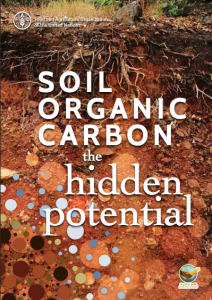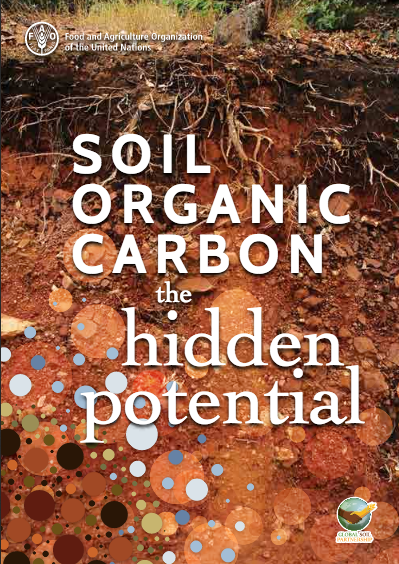 The publication „Soil Organic Carbon: The hidden potential“ by FAO provides an overview to decision-makers and practitioners of the main scientific facts and information regarding the current knowledge and knowledge gaps on Soil Organic Carbon.
The publication „Soil Organic Carbon: The hidden potential“ by FAO provides an overview to decision-makers and practitioners of the main scientific facts and information regarding the current knowledge and knowledge gaps on Soil Organic Carbon.
It highlights how better information and good practices may be implemented to support ending hunger, adapting to and mitigating climate change and achieving overall sustainable development. In the presence of climate change, land degradation and biodiversity loss, soils have become one of the most vulnerable resources in the world.
Soils are a major carbon reservoir containing more carbon than the atmosphere and terrestrial vegetation combined. Soil organic carbon (SOC) is dynamic, however, and anthropogenic impacts on soil can turn it into either a net sink or a net source of GHGs. Enormous scientific progress has been achieved in understanding and explaining SOC dynamics.
Yet, protection and monitoring of SOC stocks at national and global levels still face complicated challenges impeding effective on-the-ground policy design and regionally adapted implementation. After carbon enters the soil in the form of organic material from soil fauna and flora, it can persist in the soil for decades, centuries or even millennia. Eventually, SOC can be lost as CO2 or CH4 emitted back into the atmosphere, eroded soil material, or dissolved organic carbon washed into rivers and oceans. The dynamics of these processes highlight the importance of quantifying global carbon fluxes to ensure maximum benefits of SOC to human well-being, food production, and water and climate regulation.
Download the report „Soil Organic Carbon: The hidden potential“ here.

